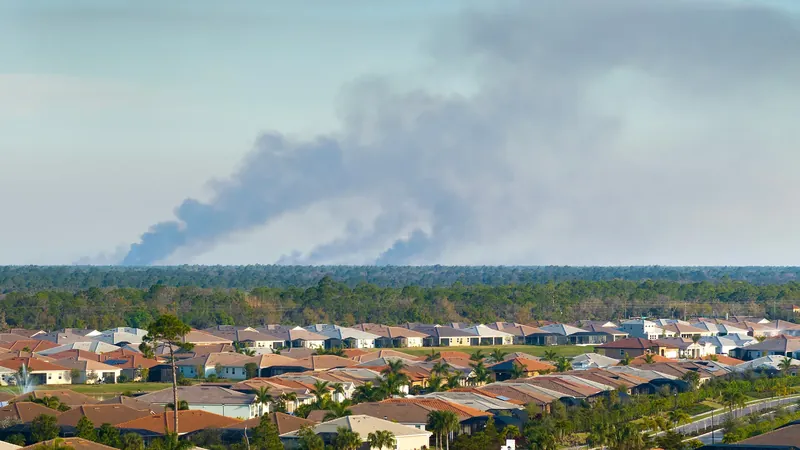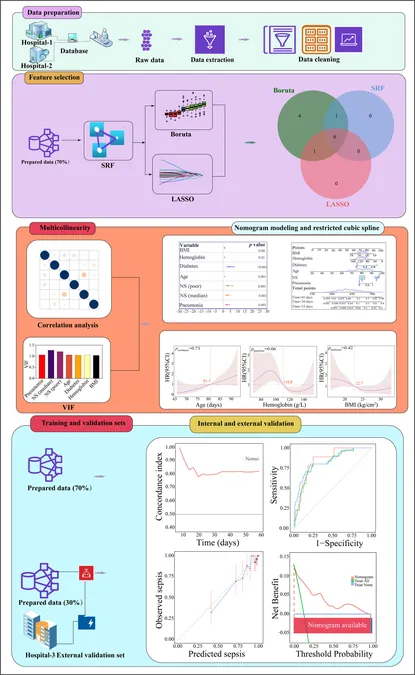
Unmasking an Invisible Threat: The Hidden Dangers of PM 1 Pollution in America
2025-06-16
Author: Sophie
The Silent Menace: What is PM 1 Pollution?
When we talk about air pollution, the focus often rests on PM 2.5—particles smaller than 2.5 microns. But lurking in the shadows is its even smaller counterpart, PM 1, which measures less than 1 micron. Recent research reveals that these minuscule particles could be doing far more harm than we realize.
Groundbreaking Research Reveals Eye-Opening Insights
In a pivotal study published in *The Lancet Planetary Health*, scientists from Washington University in St. Louis have meticulously tracked PM 1 levels across the United States over the past 25 years. Randall Martin, an expert in environmental engineering, emphasizes the importance of these findings: "This measurement provides a vital foundation for targeting pollutants that pose the greatest health risks." Chi Li, a key researcher on the project, explains how this data will pave the way for further exploration into the health and environmental impacts of these submicron particles.
Why Size Matters: The Health Risks of PM 1
PM 1 particles usually originate from harmful emissions like black carbon from diesel engines and smoke from wildfires. Their diminutive size allows them to evade the body’s natural defenses, potentially leading to severe health implications. In fact, these particles are at least six times smaller than human blood cells, making them a formidable adversary for our lungs and overall health.
The Science Behind the Numbers
The researchers used established ratios of PM 2.5 components—such as sulfate, nitrate, and mineral dust—to estimate nationwide PM 1 concentrations. This comprehensive dataset is not just a collection of numbers; it’s a critical tool for understanding how and where these dangerous particles aggregate and their impacts on both the environment and human health.
Progress and Challenges: The Fight Against Pollution
The findings also highlight the success of pollution regulation in the U.S. PM 1 levels in the air have significantly decreased from 1998 to 2022, largely due to environmental policies like the Clean Air Act. However, this progress has begun to stall since 2010, primarily due to increasing wildfire activities. Experts stress that future regulations must tackle new non-fossil fuel sources of pollution.
A Global Perspective: Catching Up with the World
While countries like China have already begun tracking PM 1 levels nationwide, the U.S. is poised to catch up with this groundbreaking research. Martin concludes, "This dataset offers unprecedented insights into an important pollutant for which we have had scant data, marking a significant leap forward in pollution science."
Next Steps: Bridging Research and Public Health
The next phase of this important research will involve collaboration with epidemiologists to link PM 1 levels to health outcomes, further elucidating the invisible dangers we breathe in every day.









 Brasil (PT)
Brasil (PT)
 Canada (EN)
Canada (EN)
 Chile (ES)
Chile (ES)
 Česko (CS)
Česko (CS)
 대한민국 (KO)
대한민국 (KO)
 España (ES)
España (ES)
 France (FR)
France (FR)
 Hong Kong (EN)
Hong Kong (EN)
 Italia (IT)
Italia (IT)
 日本 (JA)
日本 (JA)
 Magyarország (HU)
Magyarország (HU)
 Norge (NO)
Norge (NO)
 Polska (PL)
Polska (PL)
 Schweiz (DE)
Schweiz (DE)
 Singapore (EN)
Singapore (EN)
 Sverige (SV)
Sverige (SV)
 Suomi (FI)
Suomi (FI)
 Türkiye (TR)
Türkiye (TR)
 الإمارات العربية المتحدة (AR)
الإمارات العربية المتحدة (AR)